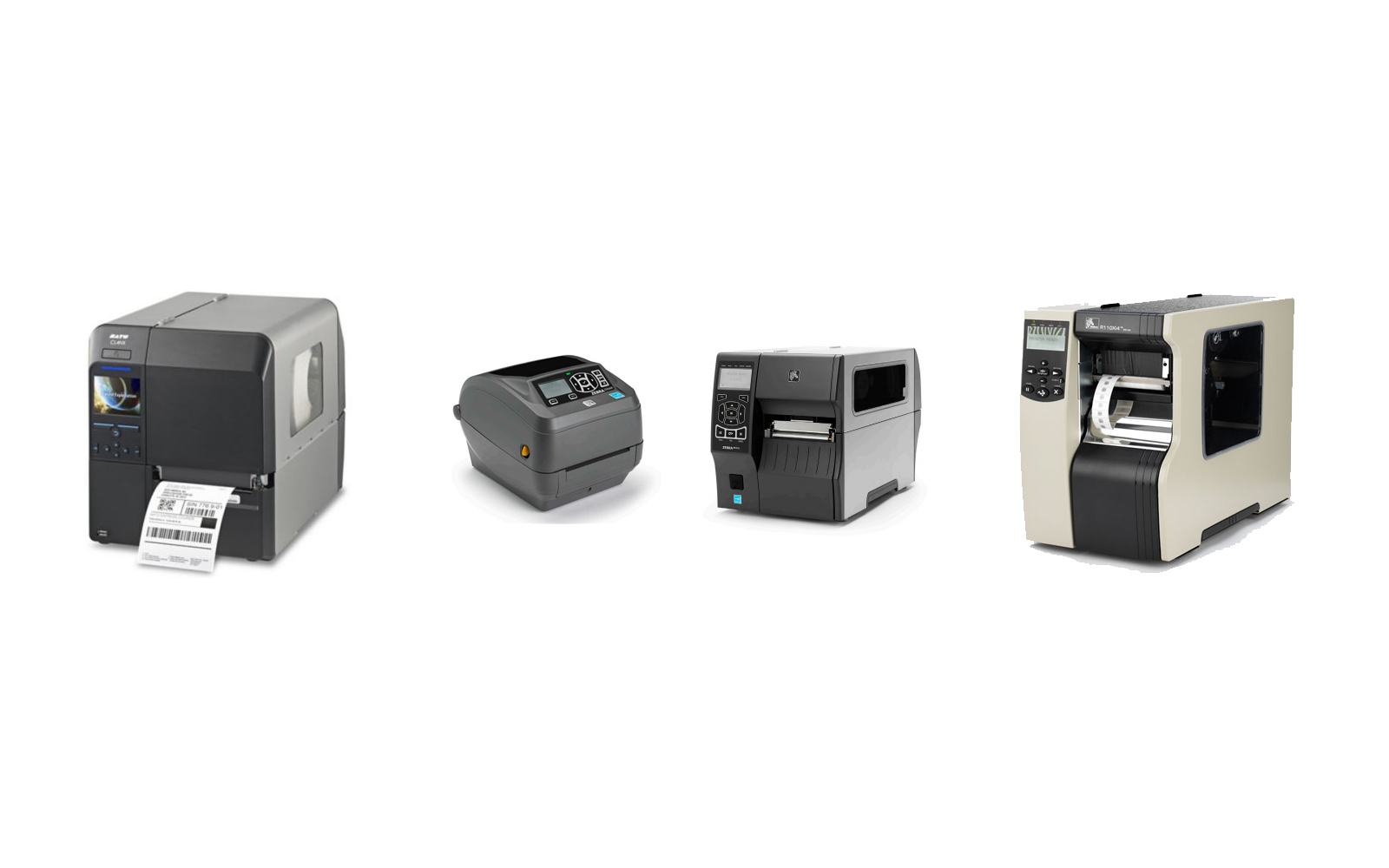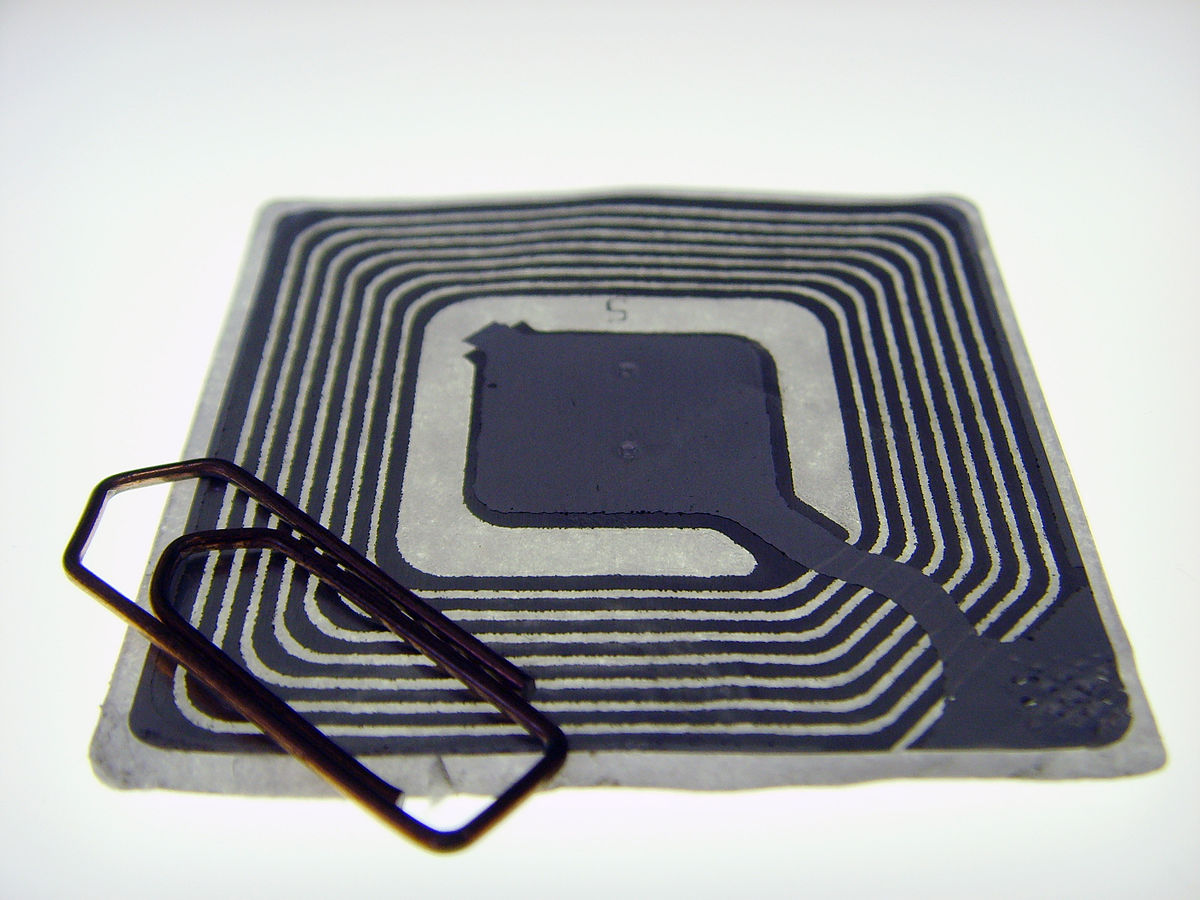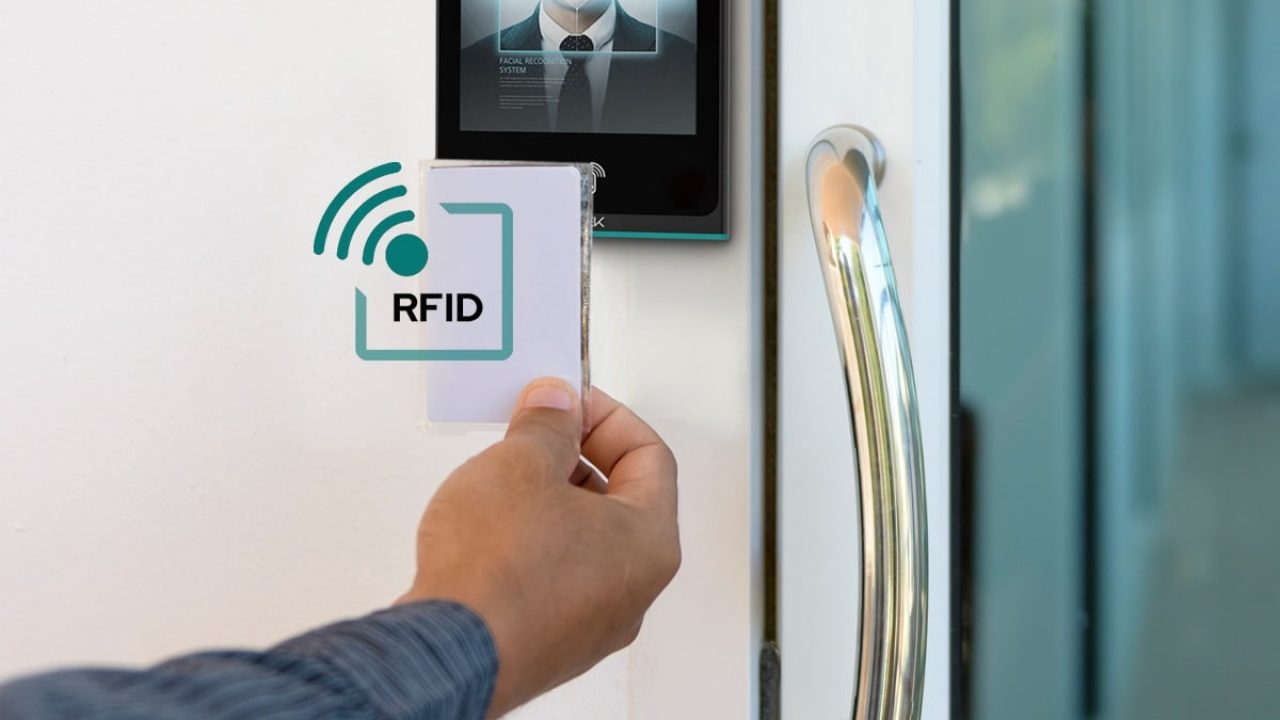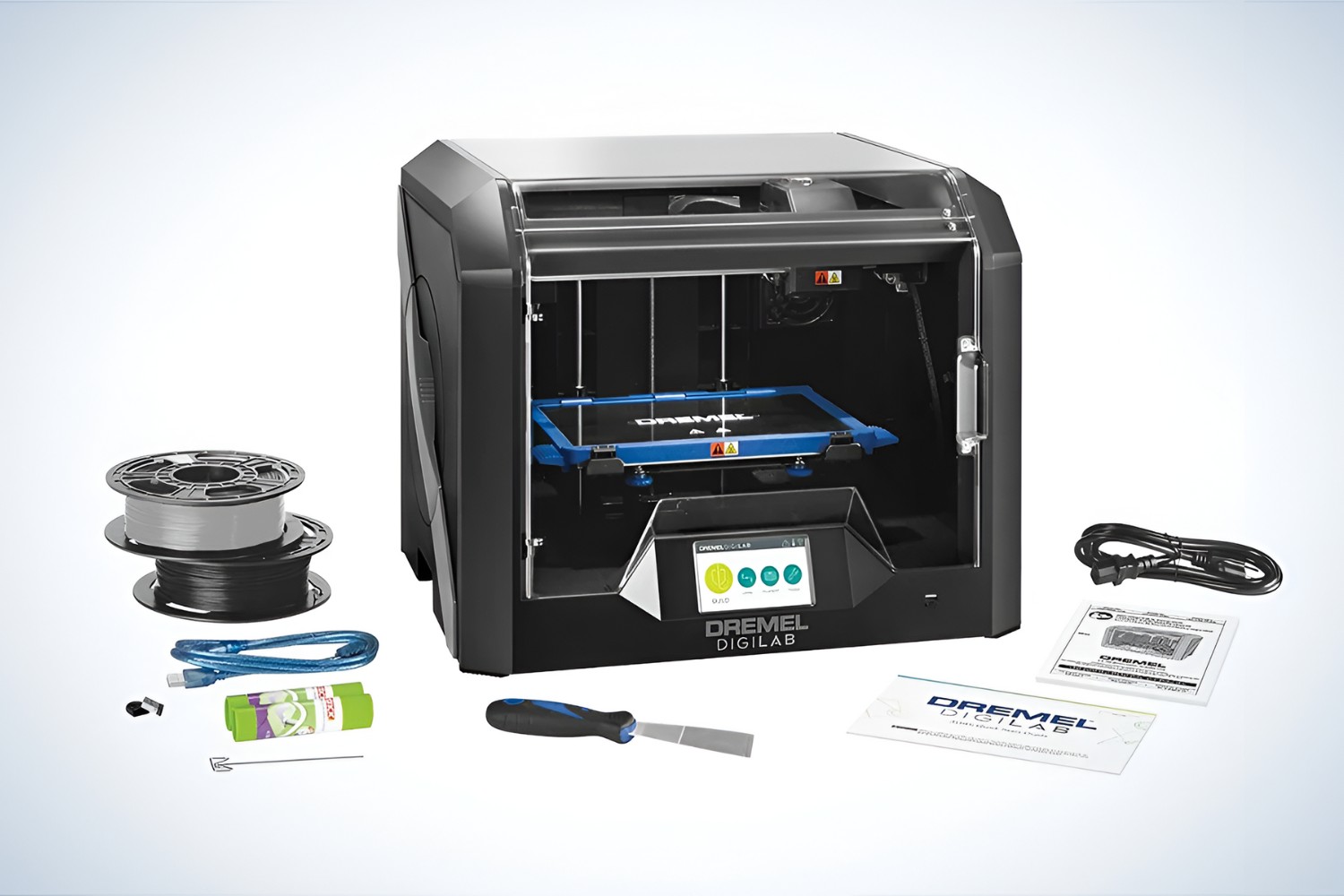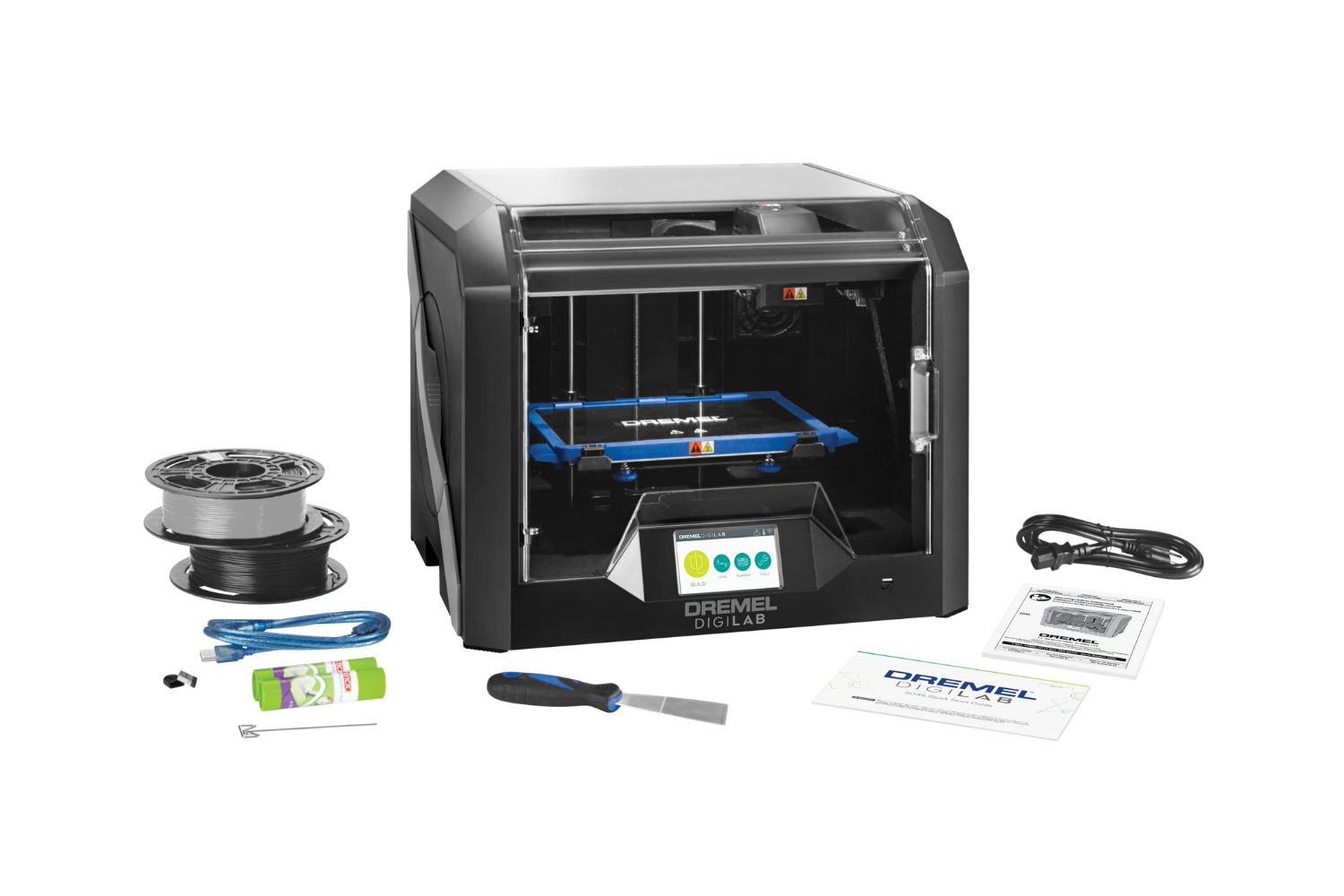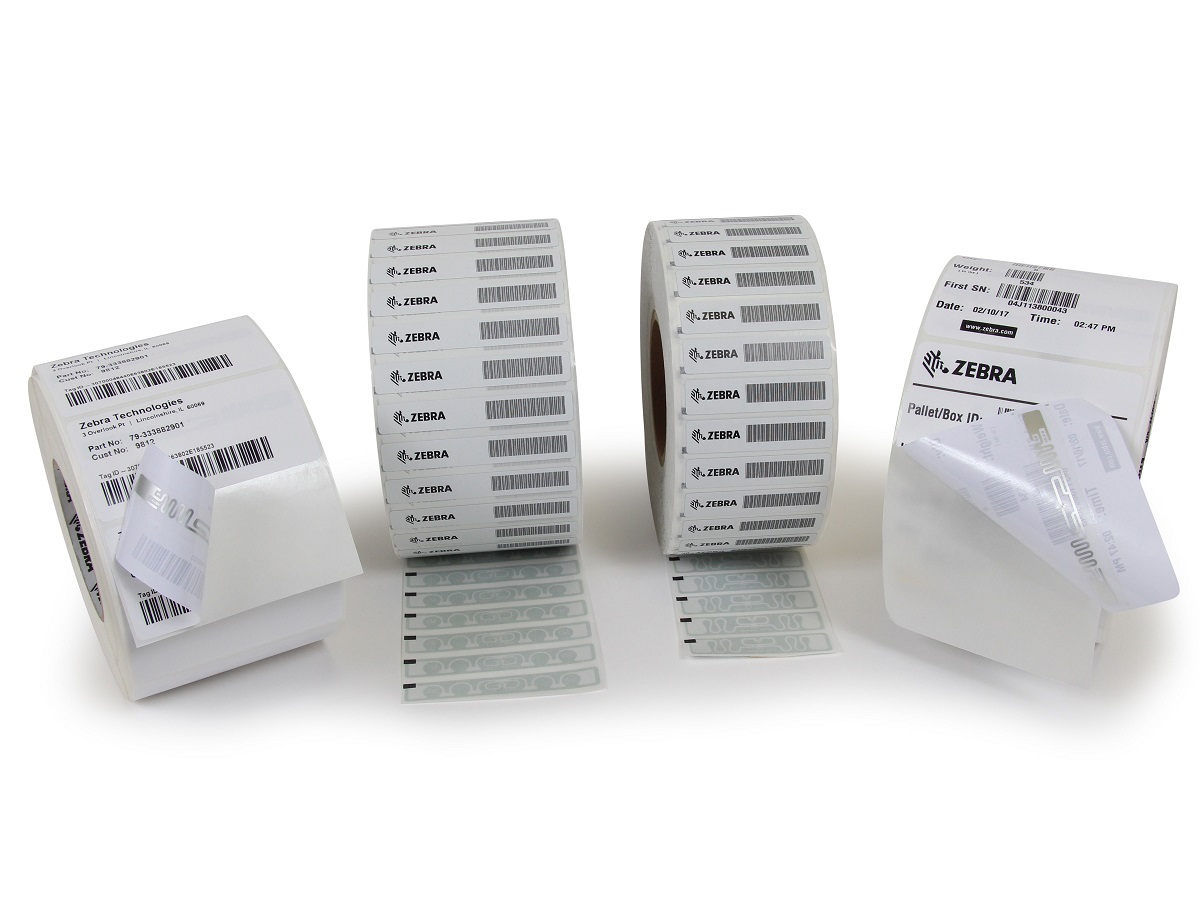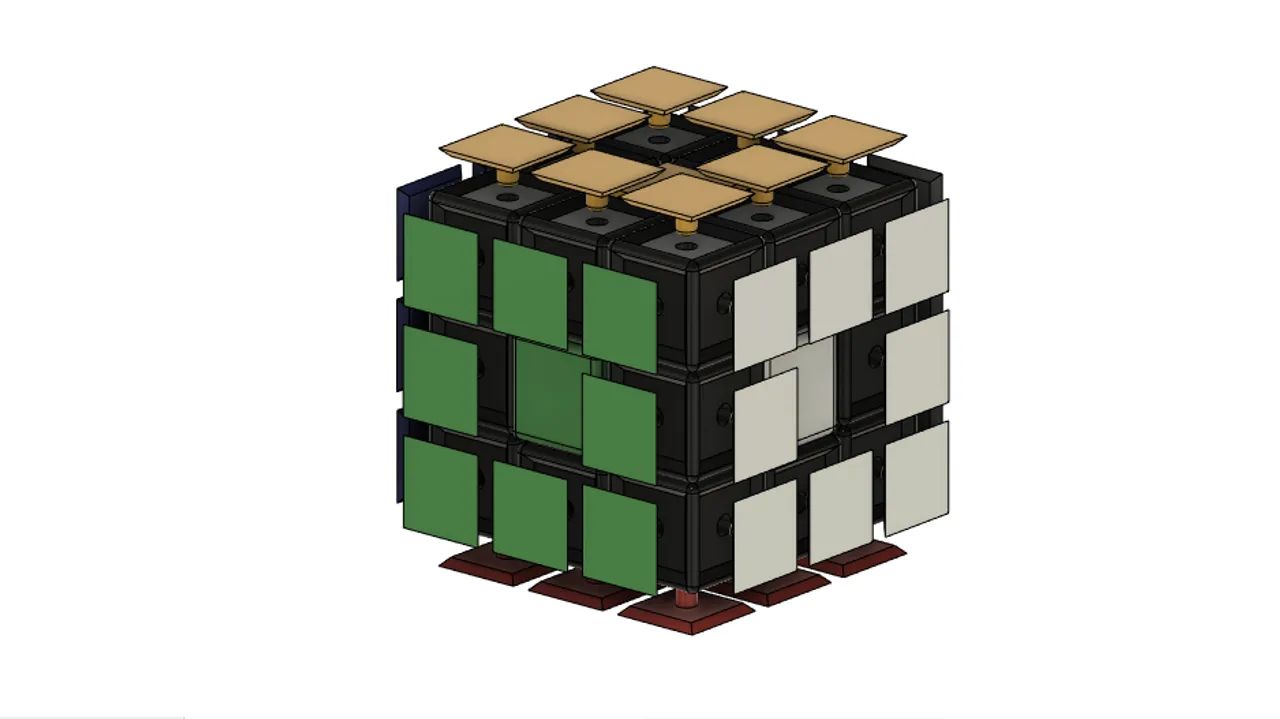Introduction
Welcome to the fascinating world of RFID label printers! In this increasingly digital age, technology continues to evolve at an impressive pace, shaping the way we interact with the world around us. Radio Frequency Identification (RFID) is one such innovation that has revolutionized the tracking and identification of items. RFID label printers play a vital role in this process by encoding information onto labels that can be affixed to a wide array of objects.
RFID technology utilizes electromagnetic fields to automatically identify and track tags attached to objects. These tags contain electronically stored information, which can be read and accessed by specialized RFID readers. The ability to print precise, readable RFID labels is crucial for seamless inventory management, supply chain logistics, and asset tracking.
In this article, we will delve into the working mechanisms of RFID label printers, exploring the components that make them function, how they encode information, and the different types available. Additionally, we will discuss the advantages and challenges of using RFID label printers and highlight their various applications in different industries.
Understanding the inner workings of RFID label printers is essential for businesses looking to optimize their operations, improve efficiency, and streamline their supply chain management. So, let’s dive in and unravel the secrets behind these ingenious machines.
What is RFID?
RFID stands for Radio Frequency Identification—a technology used to track and identify various objects using radio waves. It involves the use of small electronic devices called RFID tags or transponders that communicate with RFID readers or scanners. These tags consist of a microchip and an antenna, which transmit and receive data through radio waves.
The unique feature of RFID technology lies in its ability to wirelessly transmit information over short distances. Unlike traditional barcodes, which require line-of-sight scanning, RFID tags can be read from a distance without the need for direct contact or a clear view of the tag. This makes RFID a versatile and efficient solution for a wide range of applications.
RFID technology operates on different frequency bands, including low frequency (LF), high frequency (HF), ultra-high frequency (UHF), and microwave frequency. Each frequency range has its own strengths and is suitable for specific use cases.
RFID tags can be classified into two main categories: active and passive. Active RFID tags have their own power source, typically a battery, which enables them to transmit signals over longer distances. On the other hand, passive RFID tags do not have an internal power source and rely on the energy received from the RFID reader to power the tag and communicate data. Passive tags are more cost-effective and widely used in applications where the reading distance is shorter.
RFID technology offers numerous benefits in various industries. It enables real-time tracking and monitoring of assets, improves supply chain visibility and inventory management, enhances security and access control systems, and facilitates contactless payments and ticketing.
Now that we have a basic understanding of RFID technology, let’s explore how RFID labels work and the role of RFID label printers in the process.
How Do RFID Labels Work?
RFID labels, also known as RFID tags or smart labels, are an essential component of the RFID system. They contain a unique identifier and additional data that can be read and processed by RFID readers. RFID labels consist of an RFID chip, an antenna, and a substrate material that holds the components together.
When an RFID label is brought within the range of an RFID reader, the reader emits electromagnetic waves. These waves power the RFID label, activating the RFID chip. The chip then transmits the stored data through the antenna back to the reader.
The RFID label acts as a bridge between the physical world and the digital realm. It enables businesses to easily identify and track items across their entire supply chain, from manufacturing to warehousing and distribution.
There are various types of RFID labels, including adhesive labels, hang tags, and sewn-in labels, that cater to different applications and industries. For instance, adhesive labels are commonly used for product identification and inventory management, while sewn-in labels are often utilized in the textile and apparel industry to track merchandise.
RFID label printing is a critical process in the production of RFID labels. RFID label printers are designed to accurately and efficiently print the necessary information onto the labels. They can encode details such as product names, serial numbers, barcodes, and even customized data specific to the application.
As technology advances, RFID label printers have become more sophisticated, offering features like encoding multiple tag types, personalization options, and high-speed printing capabilities. These printers can handle various label materials, including paper, synthetic materials, and even on-metal labels for applications that require the tags to adhere to metal surfaces.
The data encoded on RFID labels can be read and processed by RFID readers, which are strategically placed throughout the supply chain. These readers capture the information from the RFID labels and transmit it to a central database or system, allowing businesses to track and monitor their assets, streamline operations, and make informed decisions based on real-time data.
In the next section, we will explore the components of an RFID label printer and how they work together to produce accurate and reliable RFID labels.
Components of an RFID Label Printer
An RFID label printer is a complex device comprised of several key components that work together to produce high-quality and accurate RFID labels. Understanding these components is essential for optimizing the printing process and ensuring the successful encoding of data onto the labels.
1. Print Mechanism: This is the core component of an RFID label printer. It consists of a print head, platen, and motor. The print head contains tiny heating elements that selectively heat areas of the label, transferring the ink onto the substrate. The platen is a rubber roller that holds the label in place during printing, while the motor controls the movement of the label and print head.
2. Ribbon Supply: For RFID label printers that utilize thermal transfer printing technology, a ribbon supply is necessary. The ribbon is made of ink-coated material and is used to transfer the ink onto the label. It plays a crucial role in producing clear and durable prints.
3. Label Supply: The label supply is a roll of RFID labels that are fed into the printer for printing. It is important to ensure that the labels are properly loaded and aligned to achieve accurate printing results.
4. RFID Encoder: This component is responsible for encoding the RFID tags embedded in the labels. It communicates with the RFID chip and writes the necessary data onto the tag, such as unique identifiers, product information, and other custom data.
5. Control Panel: The control panel allows users to interact with the printer and adjust settings, such as print speed, print density, and label size. It provides a user-friendly interface for managing print jobs and monitoring printer status.
6. Connectivity Options: RFID label printers offer various connectivity options, including USB, Ethernet, Wi-Fi, and Bluetooth. These options enable seamless integration with computer systems, network connectivity, and remote printing capabilities.
7. Software: RFID label printers require specialized software to design and manage label layouts, as well as to communicate with the printer. The software enables users to create customized label designs, import data from databases, and control the printing process.
By understanding the components of an RFID label printer and their functionalities, businesses can make informed decisions when selecting a printer that best fits their operational needs. Additionally, regular maintenance and calibration of these components ensures the longevity and optimal performance of the RFID label printer.
In the next section, we will explore how RFID label printers encode information onto RFID labels and the different methods utilized in this process.
How Do RFID Label Printers Encode Information?
RFID label printers play a crucial role in encoding information onto RFID labels, ensuring that the data is accurately stored and can be read by RFID readers. The encoding process involves programming the RFID tags embedded within the labels with the relevant data required for identification and tracking purposes.
There are various methods used by RFID label printers to encode information onto RFID labels:
1. Direct Write: In this method, the RFID label printer uses a direct write technology, such as thermal transfer or direct thermal printing, to print the required data directly onto the label’s surface. This includes alphanumeric characters, barcodes, and even custom information specific to the application. The RFID label printer ensures that the printing is precise and readable, facilitating easy identification and tracking.
2. RFID Encoding: The primary function of an RFID label printer is to encode the RFID tags embedded within the label. The printer’s RFID encoder communicates with the RFID chip and writes the necessary data onto the tag. This can include unique identifiers, product information, batch numbers, expiration dates, and other relevant details. The encoding process ensures that each RFID tag is uniquely identified and provides the required information for tracking and inventory management purposes.
3. Data Management: RFID label printers are equipped with software that enables users to manage and control the data to be encoded onto the RFID labels. This software allows users to import data from databases, create dynamic label designs, and customize the information to be encoded. It ensures that the correct information is associated with each label, eliminating errors and improving overall efficiency.
4. Serialization: Many RFID label printers offer serialization capabilities, allowing users to automatically generate and assign unique identification numbers to each RFID tag. This is particularly useful in scenarios where a large number of labels need to be encoded. The printer can generate sequential or random numbers and apply them to the labels, ensuring that each tag has a distinct identifier.
5. Encoding Validation: To ensure the accuracy of data encoding, RFID label printers often provide encoding validation features. These features check the encoded data on the RFID tag against the data provided by the user or the database. This validation process helps identify any discrepancies or errors, allowing for corrective measures before the labels are put into use.
By utilizing these encoding methods and features, RFID label printers ensure that the information on the RFID labels is accurate, legible, and compatible with RFID readers and systems. This enables seamless tracking, inventory management, and asset identification across various industries and applications.
In the next section, we will explore the different types of RFID label printers available in the market and their specific functionalities.
Types of RFID Label Printers
RFID label printers come in various types, each offering different functionalities and capabilities to cater to the unique needs of businesses. Understanding the different types can assist in selecting the most suitable printer for specific applications and requirements. Here are some common types of RFID label printers:
1. Desktop RFID Printers: These compact printers are designed for small to medium volume printing tasks. They are typically used in office environments, retail stores, small warehouses, and healthcare facilities. Desktop RFID printers offer ease of use, versatility, and affordability, making them a popular choice for businesses with lower printing demands.
2. Industrial RFID Printers: Industrial RFID printers are built for high-volume printing and rugged environments. They are commonly found in manufacturing plants, logistics centers, and large warehouses. These printers are capable of handling continuous and demanding printing tasks, offering faster printing speeds, larger label capacities, and extended durability to withstand harsh conditions.
3. Mobile RFID Printers: Mobile RFID printers are designed for on-the-go printing needs, making them ideal for field service technicians, delivery drivers, and retail associates. These lightweight and portable printers can be easily carried around, providing convenience and flexibility in printing RFID labels wherever they are needed. Mobile RFID printers are often equipped with wireless connectivity options, enabling quick and seamless label printing from smartphones or tablets.
4. RFID Label Applicator Printers: These specialized printers not only print the RFID labels but also apply them to the desired objects automatically. RFID label applicator printers are commonly used in high-speed production lines, where efficient application of RFID labels onto products or packages is essential. They offer precise label placement, reducing the need for manual labor and ensuring accurate labeling.
5. On-Metal RFID Printers: On-metal RFID printers are specifically designed to print and encode RFID labels that can be applied to metal surfaces. These printers utilize special label materials and printing techniques to ensure reliable adhesion and reading capabilities. On-metal RFID printers are used in applications such as asset tracking, equipment management, and inventory control in industries where metal surfaces are prevalent.
Each type of RFID label printer has its own advantages and caters to specific printing requirements and environments. Considerations such as printing volume, application needs, durability, and connectivity options should be taken into account when selecting the most suitable RFID label printer for a particular business scenario.
In the next section, we will explore the advantages of using RFID label printers in various industries.
Advantages of Using RFID Label Printers
RFID label printers offer numerous advantages over traditional printing methods, making them a valuable tool for businesses across various industries. By leveraging the capabilities of RFID label printers, organizations can enhance efficiency, accuracy, and overall productivity. Here are some key advantages of using RFID label printers:
1. Improved Efficiency: RFID label printers enable faster and more efficient printing compared to manual or traditional printing methods. With high-speed printing capabilities and automation features, businesses can streamline their labeling processes, reducing time and effort required for printing and application. This increases productivity and allows employees to focus on other critical tasks.
2. Accurate Data Encoding: RFID label printers ensure accurate data encoding onto RFID tags. By integrating advanced encoding technologies, these printers can write and verify information such as unique identifiers, product details, and serial numbers onto the RFID labels. This eliminates human errors and ensures consistent and reliable data for inventory management, supply chain tracking, and asset identification.
3. Enhanced Inventory Management: RFID label printers facilitate real-time inventory management by enabling accurate and automated tracking of items. With RFID labels containing unique identification data, businesses can easily track the movement of assets throughout their supply chain. This improves inventory accuracy, minimizes errors in stock levels, and enables timely replenishment, reducing stock-outs and improving overall operational efficiency.
4. Streamlined Supply Chain: RFID label printers play a pivotal role in optimizing supply chain logistics. By printing and encoding RFID labels at various stages of the supply chain, businesses can track the movement of goods, monitor delivery schedules, and ensure timely and accurate order fulfillment. This visibility and traceability enable businesses to address supply chain bottlenecks, reduce inventory holding costs, and meet customer demands more effectively.
5. Improved Security: RFID label printers aid in enhancing security and preventing counterfeiting by enabling the printing of secure and tamper-evident RFID labels. These labels can be customized with security features like holograms, unique serial numbers, and encrypted data, ensuring authenticity and preventing unauthorized access or tampering.
6. Efficient Asset Tracking: RFID label printers facilitate the efficient tracking and management of assets, such as equipment, vehicles, and high-value items. By affixing RFID labels to assets, businesses can monitor their location, status, and maintenance history in real-time. This eliminates manual tracking processes, reduces the risk of loss or theft, and improves asset utilization and maintenance scheduling.
7. Seamless Integration: RFID label printers are designed to integrate with other systems and databases, enabling seamless data integration and communication. This allows businesses to exchange information between RFID label printers and their existing ERP (Enterprise Resource Planning) systems, WMS (Warehouse Management Systems), or other proprietary software, facilitating efficient data management and process automation.
By leveraging the advantages of RFID label printers, businesses can achieve faster, more accurate, and efficient printing and labeling processes. These benefits, in turn, lead to improved inventory management, streamlined supply chain operations, enhanced asset tracking, and increased overall productivity.
In the next section, we will discuss the challenges that businesses may encounter when utilizing RFID label printers.
Challenges of Using RFID Label Printers
While RFID label printers offer numerous benefits, there are also challenges associated with their implementation and use. Understanding these challenges can help businesses anticipate and address potential issues to ensure a successful deployment. Here are some common challenges of using RFID label printers:
1. Cost: RFID label printers can be more expensive than traditional label printers due to the additional components and technology required for RFID encoding. This initial investment may pose a financial challenge for some businesses, especially for smaller organizations with limited budgets. However, it’s important to consider the long-term benefits and return on investment (ROI) that RFID technology can provide in terms of improved efficiency and inventory management.
2. Complexity: Implementing and setting up RFID label printers can be complex, especially for businesses that are new to RFID technology. It requires understanding the intricacies of RFID tag formats, encoding protocols, and label design specifications. Businesses may need additional training or technical expertise to ensure proper configuration and use of the RFID label printer, which can add complexity to the implementation process.
3. Compatibility: Ensuring compatibility between the RFID label printer and existing systems, such as ERP or WMS, can be a challenge. Integration with these systems may require software upgrades, customization, or additional development work. Businesses need to carefully assess compatibility requirements and work closely with RFID label printer manufacturers and software providers to ensure smooth integration and data exchange between systems.
4. Label Placement and Orientation: For optimal performance, RFID labels need to be correctly placed and oriented on objects or packages. Improper label placement or orientation can lead to read failures or reduced read range, affecting the overall effectiveness of the RFID system. Businesses need to develop standardized label placement guidelines and educate employees to ensure consistent and accurate label application.
5. RFID Interference: Interference from metal or liquids can affect the performance of RFID tags and readers. RFID label printers that are used to print on-metal or near-liquid labels need to employ special techniques or materials to overcome interference challenges. Businesses should carefully select suitable RFID label printers that can handle specific label requirements to minimize interference-related issues.
6. Data Security: RFID labels contain valuable and sensitive information, making data security an important concern. Businesses need to implement appropriate security measures to ensure the integrity and confidentiality of the encoded data. This includes secure transmission of data between systems, proper access control, and encryption of sensitive information on the RFID labels.
7. Standardization and Compliance: RFID technology is continually evolving, and there may be variations in tag formats, frequencies, and protocols. Businesses need to stay updated with industry standards and regulations to ensure compliance and interoperability with other RFID systems. This requires continuous monitoring and adaptation to changes in RFID standards and specifications.
By being aware of these challenges, businesses can proactively address them during the implementation and utilization of RFID label printers. Collaborating with experienced RFID solution providers and taking the necessary precautions can help overcome these challenges and unlock the full potential of RFID technology.
In the next section, we will explore the applications of RFID label printers across various industries.
Applications of RFID Label Printers
RFID label printers have a wide range of applications across various industries, offering benefits in efficiency, accuracy, and tracking capabilities. From retail to healthcare, logistics to manufacturing, RFID label printers play a vital role in optimizing operations and enhancing overall productivity. Here are some key applications of RFID label printers:
1. Retail and Inventory Management: RFID label printers enable retailers to improve inventory accuracy, streamline stock management, and enhance the shopping experience. By affixing RFID tags to products, retailers can easily track inventory levels, identify stockouts, and automate replenishment processes. This minimizes manual counting, reduces shrinkage, and ensures accurate pricing and product information.
2. Supply Chain and Logistics: RFID label printers facilitate efficient supply chain management by providing accurate and real-time tracking of goods. By encoding RFID tags with unique identifiers, businesses can monitor the movement of products from manufacturing to warehouses, distribution centers, and retail locations. This enables improved order fulfillment, reduced errors, and better visibility throughout the supply chain.
3. Healthcare and Patient Safety: RFID label printers play a significant role in the healthcare industry to enhance patient safety and streamline asset management. RFID labels can be used to track medical devices, equipment, and medications, ensuring they are properly utilized and maintained. This helps reduce errors, prevent misplacements, and facilitate timely equipment maintenance and calibration.
4. Manufacturing and Quality Control: RFID label printers aid in streamlining manufacturing processes and improving quality control. By incorporating RFID labels into the production line, businesses can track work-in-progress, monitor product quality, and ensure proper traceability throughout the assembly process. This allows for quick identification of defects, efficient recalls, and improved overall product quality.
5. Asset Tracking and Management: RFID label printers are utilized for efficient asset tracking and management in industries such as logistics, transportation, and construction. By tagging assets like vehicles, containers, or heavy machinery, businesses can monitor their location, maintenance schedules, and usage history. This helps optimize asset utilization, prevent loss, and enhance operational efficiency.
6. Document and File Management: RFID label printers simplify document and file management processes by enabling accurate and automated tracking. RFID labels can be applied to files, folders, or boxes, allowing businesses to keep track of their location, access history, and compliance with document retention policies. This streamlines the retrieval process, reduces manual filing errors, and ensures efficient document management.
7. Event and Access Control: RFID label printers are used to create access control badges or tickets for events, conferences, or secure facilities. By encoding RFID tags onto these labels, businesses can control access, track attendance, and enhance security measures. This facilitates seamless entry and exit, eliminates manual ticket checking, and improves overall event and facility management.
These are just a few examples of the many applications of RFID label printers across different industries. The versatility and efficiency offered by RFID technology make it a valuable tool for optimizing various processes and improving overall business operations.
In the next section, we will conclude our exploration of RFID label printers and their significance in today’s business landscape.
Conclusion
RFID label printers are powerful tools that have revolutionized the way businesses track, identify, and manage their assets, inventory, and processes. With the ability to encode data onto RFID labels accurately and efficiently, these printers enable businesses to improve efficiency, accuracy, and overall productivity. From retail and healthcare to logistics and manufacturing, RFID label printers offer a wide range of applications in various industries.
By utilizing RFID label printers, businesses can enhance inventory management, streamline supply chain logistics, improve asset tracking, and ensure accurate data encoding onto RFID tags. These printers enable real-time tracking, automate processes, and provide visibility throughout the entire value chain, leading to improved operational efficiency, cost reduction, and enhanced customer satisfaction.
While the implementation of RFID label printers may come with challenges such as cost, complexity, and compatibility, addressing these challenges through proper planning, training, and collaboration with experienced solution providers can help businesses unlock the full potential of RFID technology.
As technology continues to advance, RFID label printers will evolve to offer even more advanced features, increased integration capabilities, and improved performance. Businesses that embrace and harness the power of RFID label printers will have a competitive edge in today’s fast-paced, data-driven business landscape.
In conclusion, RFID label printers are a crucial tool for businesses looking to optimize their operations, enhance efficiency, and streamline their supply chain management. By leveraging the capabilities of RFID label printers, organizations can improve inventory accuracy, enhance asset tracking, and achieve seamless integration within their existing systems. As technology continues to evolve, RFID label printers will play an increasingly vital role in driving innovation and efficiency in various industries.







